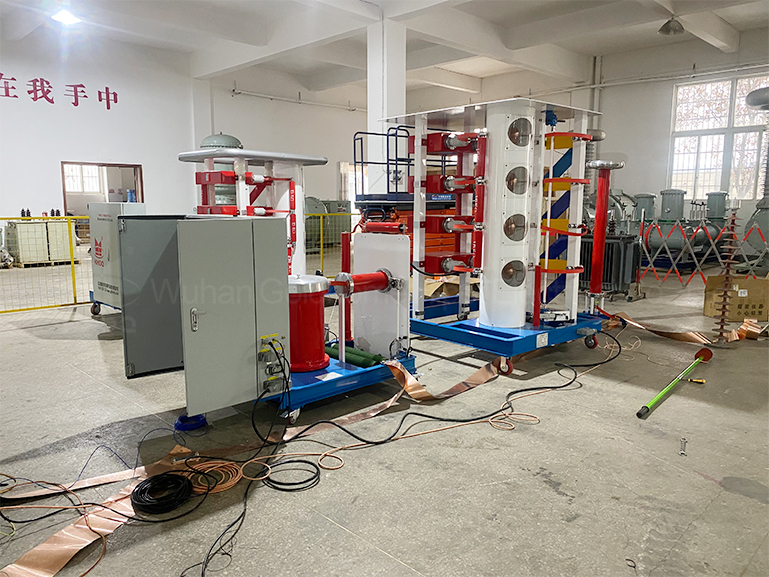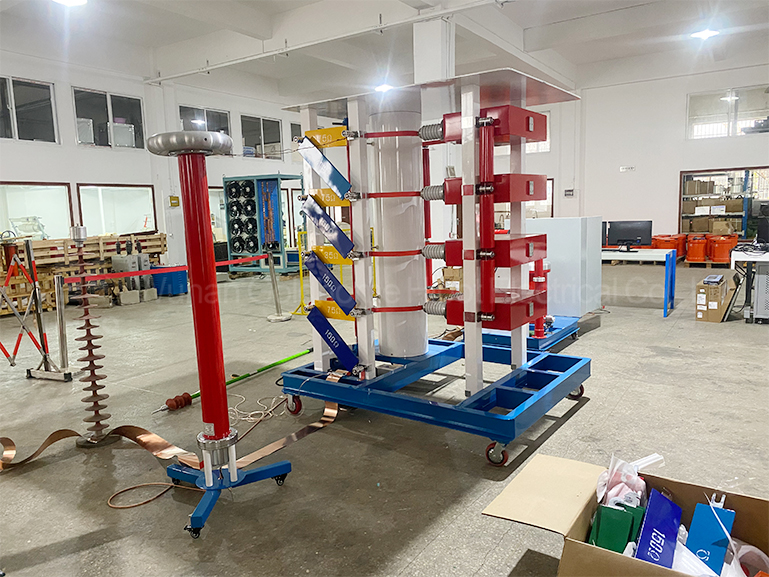Principle of impulse voltage generator

The principle of an impulse voltage generator is based on the generation of high-voltage pulses with very short durations. These generators are used to simulate lightning strikes, switching surges, or other high-voltage transients that can occur in electrical systems.
The impulse voltage generator works by charging a high-voltage capacitor to a certain voltage level and then discharging it through a load, which could be a test object or an impulse voltage measuring system. When the capacitor discharges, it produces a high-voltage pulse with a very fast rise time, typically in the range of microseconds to nanoseconds.
The formula for the voltage generated by an impulse voltage generator can be expressed as:
$V = \frac{Q}{C}$
where:
- V is the voltage generated by the impulse generator,
- Q is the charge stored in the capacitor,
- C is the capacitance of the capacitor.
By controlling the charge stored in the capacitor and the capacitance value, the impulse voltage generator can produce high-voltage pulses of varying amplitudes and durations to simulate different types of transient events for testing and research purposes.
The impulse voltage generator works by charging a high-voltage capacitor to a certain voltage level and then discharging it through a load, which could be a test object or an impulse voltage measuring system. When the capacitor discharges, it produces a high-voltage pulse with a very fast rise time, typically in the range of microseconds to nanoseconds.
The formula for the voltage generated by an impulse voltage generator can be expressed as:
$V = \frac{Q}{C}$
where:
- V is the voltage generated by the impulse generator,
- Q is the charge stored in the capacitor,
- C is the capacitance of the capacitor.
By controlling the charge stored in the capacitor and the capacitance value, the impulse voltage generator can produce high-voltage pulses of varying amplitudes and durations to simulate different types of transient events for testing and research purposes.



